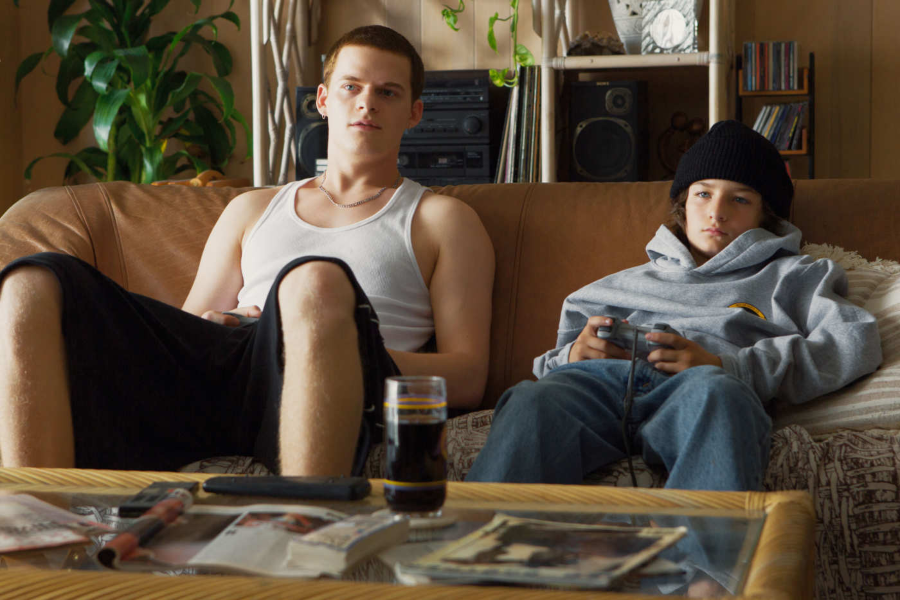Mid90’s: Reality Captured in its Most Uncomfortable Forms
Jonah Hill portrays some of life’s darkest realities in Stevie, a young teenager living in Los Angeles in the 1990’s.
December 5, 2018
I walked out of the theater, my head spinning and my heart shaken. I honestly do not know if I should be recommending this to others. Topics like addiction and abuse was not handed on a silver platter, but shoved in your face. Those who deal with these burdens were represented in this film through a group of teenagers in the 90’s and how they helped each other through those hardships.
Initially, I expected this movie to focus more on the skateboarding-90’s culture of inner-city Los Angeles. I was interested in how Jonah Hill would portray this story, being a comedic director and this movie was classified as a drama.
Hill’s movie Mid90’s is an insight into five teenage boys and how they escape their turbulent home lives. The movie focuses on one boy named Stevie, nicknamed “Sunburn”, and his journey in 1990s inner-city Los Angeles.
At the local Motor Avenue skate shop, Stevie finds a sense of belonging with a group of boys of various ages who have come from all walks of life—abusive mothers, abusive brothers, alchoholism among more. The group ages ranged from an 11-year-old Stevie to seniors in high school struggling with their impending futures of skateboarding careers, surviving an abusive home life, and finding a place in society.
Hill left no detail out to accurately depict the 90’s—from Ninja Turtle bed sheets to Wu-Tang Clan posters on the wall. While I praise Hill for his attention to detail, he focuses more on thriving in a lower class society in the time rather than just playing the “90’s card”. He did not hold back in exhibiting the transformation from a troubled youth to substance abusing teen.
Stevie and his friends have been exposed to some of the harshest realities of life including abuse, poverty and addiction. Stevie, who is abused daily by his older brother, looks for comfort in a group of skateboarders at a local skate shop. These friends become something like a family, spending almost every waking moment together.
The teens struggle with breaking the identities that have been placed upon them since their youth. Hill divulges into the lives of the characters, showing their struggles and how they find their escape through skating.
The leader of the skateboarding group, 18 year old Ray, discusses dealing with racism in his life as a young black man. He played it off as a joke initially, but throughout the film he worked harder than the rest of the group by making connections with professional skateboarders and taking the sport more seriously than the rest of the group when in public. Skateboarding was more than just an escape, it was potential for independence.
I redacted a star from this film because of the sheer intensity it brought. The film covered a variety of strong messages and topics, but too many to fit into one hour and a half movie. Viewers were hit with heart-wrenching scene after scene that my heart physically hurt by the end of the movie. Besides the emotional pain, the movie was well shot and written and the portrayal of skateboarding culture was done well.
The movie ended feeling unfinished, telling the viewer that there is no “happy ending” to life. Hill leaves the movie with an uncertainty of where you are going next and scared to death of what you just experienced. Your childhood, family, friends and interests are what make you who you are. Hill’s directorial debut has left me shaken, speechless and intrigued to see what he does next.




